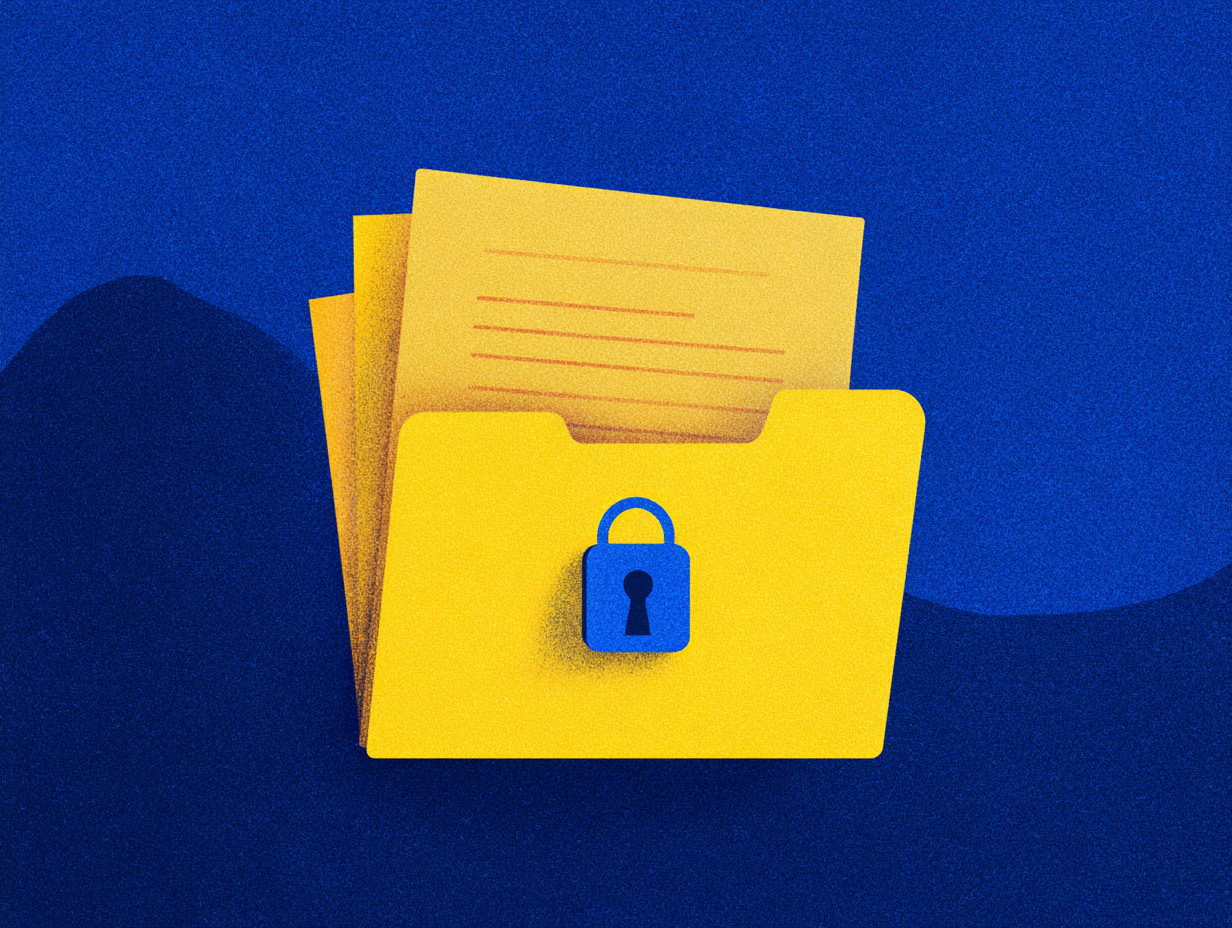
Choosing a Secure Password Manager in 2025
Managing an growing list of passwords shouldn’t be a headache or a security risk. A dedicated password manager simplifies this challenge by generating, storing, and auto-filling complex passwords—all while keeping your sensitive data safe.
In modern digital landscape, where cyberattacks are becoming more sophisticated, relying on a robust password manager is not just convenient: It’s a necessity for businesses and individuals alike.
In this article, we’ll break down the essential features that make a password manager secure and explain why investing in one is critical for protecting your digital assets.
What Is a Secure Password Manager?
A secure password manager is a tool that stores, encrypts, and auto-fills passwords. It ensures that users can generate and manage unique, complex passwords without the risk of forgetting them.
However, the key difference between a basic and a secure password manager lies in its security architecture: basic or secure.
- Basic password managers store credentials but often rely on centralized servers, server-side encryption, and cached data making them potential targets for breaches. Where in reality you are sharing the ownership of your password with the ‘basic password manager’ provider.
- Secure password managers use client-side, end-to-end encryption, ensuring that passwords are encrypted before they leave the user’s device, along with data fragmentation, and distributed storage, preventing unauthorized access—even by the service provider.
Key Features of a Secure Password Manager
1) Client-side & End-to-End Encryption (E2EE)
Most password managers encrypt stored credentials, but not all implement client-side encryption. A truly secure password manager ensures that encryption occurs before the data ever leaves your device, making it impossible for anyone, including the provider, to access your vault.
For instance, TransferChain Pass employs client-side, end-to-end encryption combined with blockchain-based authorization, making it fundamentally more secure than traditional password managers relying on server-side encryption.
2) Data Splitting for Ultimate Privacy Protection
Instead of storing encrypted data in a single location, some password managers employs a data-splitting mechanism that:
- Fragments password data into multiple encrypted pieces, before it leaves the user’s client device
- Distributes them across different storage nodes, ensuring no single breach compromises security.
- Eliminates centralized attack vectors—a major flaw in traditional password managers.
This approach ensures absolute confidentiality, even in the event of infrastructure attacks.
3) Secure Password Sharing for Teams
Businesses often share credentials within teams, which can become a security risk. A secure password manager enables encrypted password sharing where:
- Employees can access passwords without seeing them.
- Permissions can be revoked instantly.
- Zero-knowledge encryption ensures no third party (including the provider) can access shared credentials.
4) Role-Based Access Control for Businesses
Businesses require fine-grained control over access permissions. A secure password manager enables:
- Role-based access controls (e.g., Admin, Manager, Employee)
- Audit logs to track credential usage
- Shared folders with access control
5) Privacy-Focused Data Residency Options
Most of the password managers store user data in predefined global locations (usually within the United States). A secure password manager should allow users to:
- Choose where their encrypted data is stored (EU, US, private cloud, etc.)
- Comply with regional privacy laws like GDPR & CCPA
- Ensure full control over their encryption keys
This ensures businesses and individuals can meet compliance requirements while retaining control over sensitive data.
6) Advanced Password Complexity Controls
A secure password generator should allow users to create high-entropy passwords with customizable complexity settings.
Features should include:
- Adjustable length (e.g., 16-64 characters for maximum security)
- Inclusion of uppercase, lowercase, numbers, and special characters
- Avoidance of common words or predictable patterns
This ensures that every generated password is strong, unique, and resistant to brute-force attacks.
Why Businesses Need a Secure Password Manager
1) The Cost of Weak Passwords
A single weak or reused password can open the door to massive damage.
- Over 80% of data breaches result from stolen or weak credentials, with the average corporate breach costing $4.45 million.
- Yet, 73% of employees still reuse passwords, significantly increasing security risks.
2) Compliance & Regulatory Requirements
Businesses operating under GDPR, HIPAA, or NIST standards must enforce strict password policies to ensure compliance.
Using a password manager with zero-knowledge encryption helps meet regulatory standards and avoid penalties.
3) Reducing IT Workload & Enhancing Security
Password-related support requests (resets, lockouts) are a major drain on IT resources. Implementing a secure password manager drastically reduces IT workload while improving operational security.
How TransferChain Pass Stands Out with Its Secure Password Manager
Unlike traditional password managers that store sensitive data on centralized servers, TransferChain Pass offers an entirely different approach:
- Client-Side Encryption: Your passwords are encrypted on your device before being stored, ensuring only you can access them.
- Data Splitting & Blockchain Authorization: Instead of relying on a single storage point, data is fragmented and distributed, making unauthorized access impossible.
- Zero Third-Party Access: No one—not even TransferChain—can access your credentials.
- Seamless User Experience: Built for both individuals and enterprises, with intuitive UI/UX that simplifies security management without compromising protection.
To Better Protect Your Passwords
Passwords are the first line of defense against cyber threats, yet they are often the weakest link. A secure password manager is no longer a luxury—it’s a necessity for both individuals and businesses.
Choosing the right one can mean the difference between a breach-prone system and ironclad security. With TransferChain Pass, you get the highest level of encryption, blockchain-based authentication, and zero-knowledge security—ensuring your credentials remain truly private.

🔐 Take control of your password security today.
Try TransferChain Pass, now!
Frequently Asked Questions (FAQs)
Which Is the Safest Password Manager?
The safest password manager uses true zero-knowledge architecture, client-side encryption, and advanced security measures like blockchain-based authorization and data splitting. Instead of relying on centralized storage, these technologies ensure that passwords are encrypted before leaving your device, authorization is distributed securely, and no single breach can expose your credentials. This approach guarantees absolute privacy with no third-party access, setting a higher standard for password security.
Which Password Manager Has Never Been Breached?
TransferChain Pass has never been breached thanks to its client-side encryption, data fragmentation, and blockchain-based authorization. It doesn’t store encryption keys or plaintext passwords, and unlike traditional password managers, no single point holds complete user data—making breaches ineffective.
What Is a Secure Password Manager?
A secure password manager ensures that only the user can access their credentials, with no third-party interference. Key features include zero-knowledge and client-side encryption, MFA, and decentralized storage. TransferChain Pass meets all these standards, delivering truly secure password management.
Is LastPass Still Safe in 2025?
As of 2025, LastPass remains under scrutiny due to past breaches tied to its centralized storage model. Despite using AES-256 encryption, its architecture makes it a prime target. For stronger security, users should choose decentralized, zero-knowledge solutions like TransferChain Pass, which eliminates single points of failure, uses blockchain-based access control, and ensures full encryption—both at rest and in transit.


